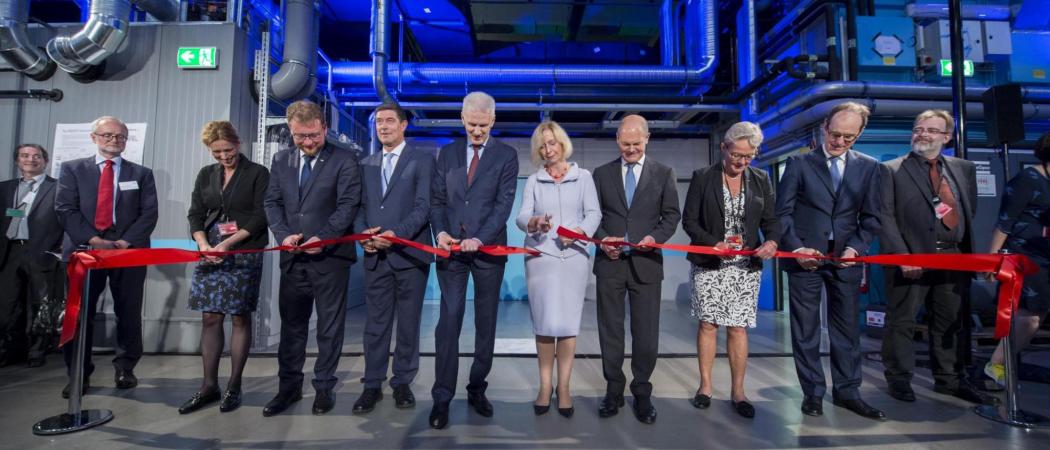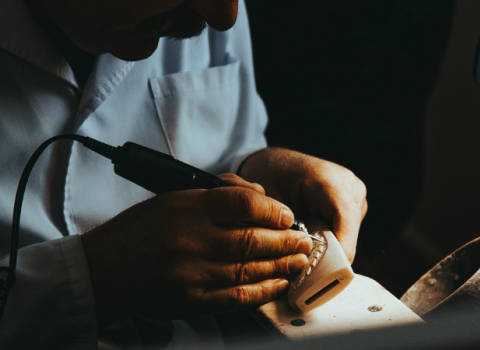The largest and most powerful X-ray laser in world has opened in Hamburg. The machine can generate ultrashort X-ray flashes 27,000 times per second, with a brilliance that is a billion times higher than the best conventional X-ray radiation sources.

European XFEL, the largest and most powerful X-ray laser in the world, is due to begin operations this month, following its official opening.
Speaking at the opening ceremony, Johanna Wanka, German Minister for Education and Research, said the European XFEL is a unique cutting-edge research facility. “[It] promises ground breaking insights into the nanocosmos. The foundations for tomorrow’s innovations are laid by today’s basic research,” Wanka said.
The facility will open the door to new areas of science, said XFEL’s Managing Director Robert Feidenhans’l, “We are proud to be opening the strongest X-ray laser in the world and start doing science together with our user community.
Helmut Dosch, Chairman of the Deutsches Elektronen-Synchrotron (DESY) in Hamburg, where XFEL is housed said, “What started as a vision and was set in motion at DESY more than 20 years ago has now become a reality: the world’s most powerful laser for X-ray light. Scientists from around the world will conduct research at this most advanced high-speed camera.
The European XFEL produces extremely bright and ultrashort light pulses at the rate of up to 27,000 pulses per second, which is 200 times more than other X-ray lasers. With the help of specialised instruments, these X-rays enable completely new insights into the atomic details and extremely fast processes of the nanoworld.
For example, these X-ray flashes can be used to map the three-dimensional structure of biomolecules and other biological particles, and do so faster and with more detail than has ever been previously possible.
Single snapshots of particles produced with the X-ray laser can be sewn together to create molecular movies plotting the progress of biochemical and chemical reactions that could form the basis for the development of new medicines and therapies, or environmentally friendlier production methods and processes for extracting energy from sunlight.
Other applications lie in materials science with the development of new materials and substances, in the optimisation of storage media for computers and the investigation of extreme matter conditions, such as those found within exoplanets.
French Minister of Higher Education, Research and Innovation, Frédérique Vidal, said, “The European XFEL is a great illustration of Europe’s leading role in the international competition and of the know-how of its industrial players in building top-level scientific instruments. France and its European partners are fully engaged in reinforcing and developing large-scale research infrastructure and making it a shared goal in the construction of the European Research Area.”
Scientists from across the world can come to European XFEL to do their research, by applying for access to the instruments via a selection process. The assignment of beam time, of generally one or two weeks per group and experiment, will be granted according to the scientific excellence of the submitted proposals.
Scientists are currently busy preparing for the first user experiments at the facility, which will begin in mid-September.
At present, 11 countries are participating in the project: Denmark, France, Germany, Hungary, Italy, Poland, Russia, Slovakia, Spain, Sweden, and Switzerland. The UK is in the process of joining the European XFEL as the twelfth member state.
Construction of the €1.22 billion facility began in early 2009. As the host country, Germany (the federal government, the city-state of Hamburg, and the state of Schleswig-Holstein) covered 58 per cent of these costs. Russia paid 27 and and the other international partners between 1 - 3 per cent.
Mauro Dell’Ambrogio, State Secretary for Education, Research, and Innovation of Switzerland, said, “Today, 11 countries showed that together they are able to build a very complicated, very expensive facility dedicated to science, and all of this in record time and within budget.”
Łukasz Szumowski, Polish Deputy Minister of Science and Education, said, “The 3.4-kilometre-long underground X-ray laser is truly state-of-the-art. What is important is that it will contribute not only to basic science but also to practical applications, e.g. in materials science, biology and even medicine, which is close to my heart.”
Minister Prien said: “The inauguration of this worldwide unique X-ray laser is a great moment for the scientific community, the European XFEL Council and member countries, for Germany and, of course, for Hamburg and Schleswig-Holstein. The billion-euro project marks a new era in fundamental research and will also deliver enormous impulses for many applications – a major location for science of international standing has been created in Schenefeld.”
At the opening ceremony the button was pressed to start the first ever experiment at European XFEL to determine the structure of a biomolecule. In this model experiment, the structure is already known, allowing the researchers to check that the X-ray laser and the instruments are optimally coordinated.
The first sample with unknown structure will come with users when they arrive for experiments at the facility in mid-September.





 A unique international forum for public research organisations and companies to connect their external engagement with strategic interests around their R&D system.
A unique international forum for public research organisations and companies to connect their external engagement with strategic interests around their R&D system.